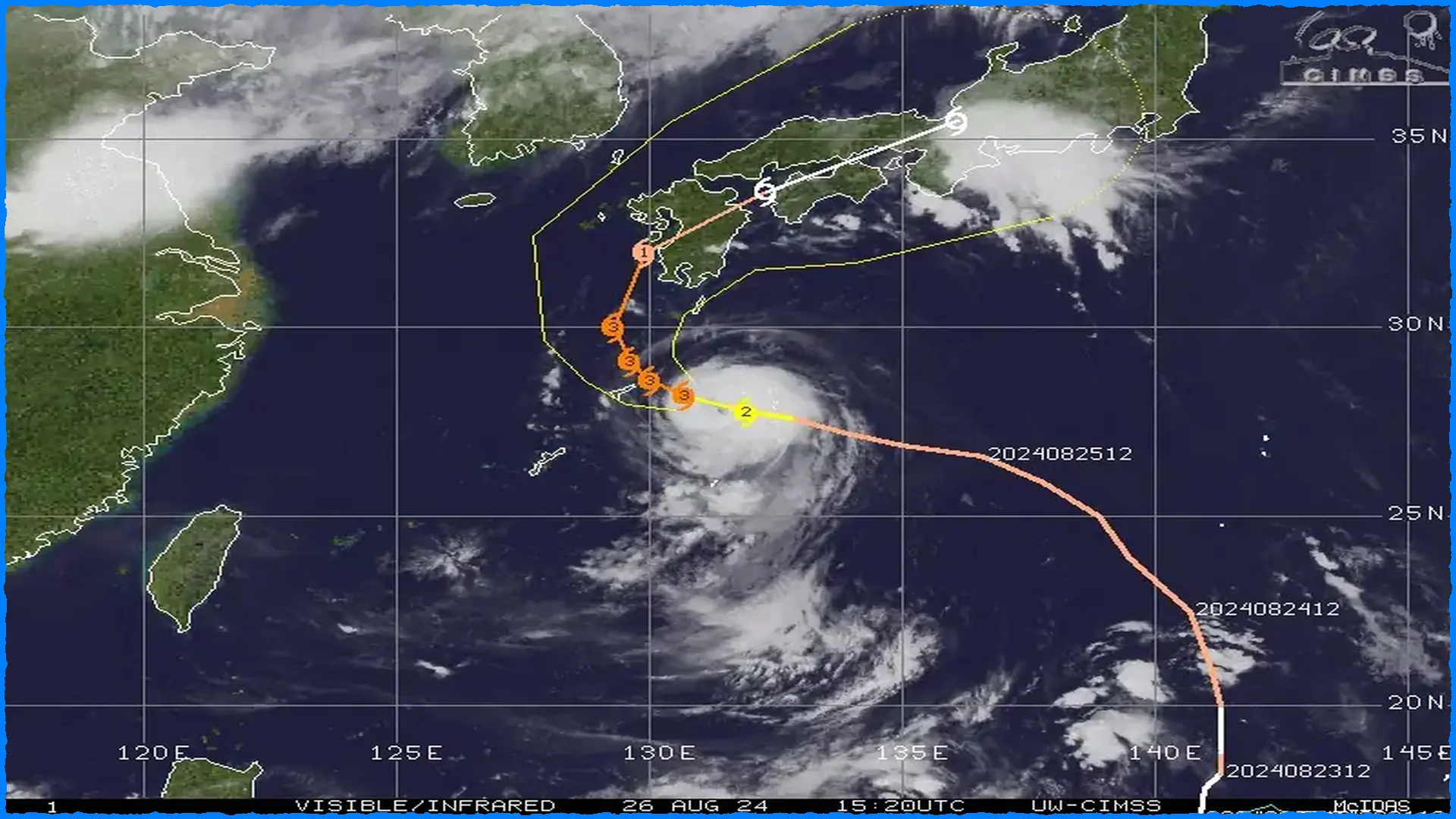
Typhoon "Shanshan" Slows Down as It Nears Japan, Landfall Expected in Kyushu on August 29

As Typhoon "Shanshan" approached the Japanese archipelago on August 26, 2024, the system has slowed down in its progression. According to the Japan Meteorological Agency (JMA), the typhoon is projected to approach western Japan and the Amami region from Tuesday, August 27, through Wednesday, August 28, bringing strong winds and heavy rainfall, particularly along the Pacific coast.
The Joint Typhoon Warning Center (JTWC) has forecasted that the landfall will occur south of Sasebo, Nagasaki Prefecture, at approximately 15:00 UTC on August 29, with maximum sustained winds of around 150 km/h (92 mph). The JMA has issued warnings of violent winds, high waves, landslides, flooding, and swollen rivers, urging residents in affected areas to take necessary precautions.
At 15:00 UTC on August 26, the center of Typhoon "Shanshan" was located approximately 430 km (267 miles) east-northeast of Kadena Air Base, Okinawa, Japan. The system had maximum sustained winds of 167 km/h (104 mph) and was moving west-northwest at 15 km/h (9 mph) over the past 6 hours. Significant wave height is reaching 10 m (33 feet).
JTWC forecasters expect the system to turn poleward over the next 48 hours, then round the axis of the steering ridge and turn eastward toward Kyushu thereafter. The current JTWC forecast places the landfall point south of Sasebo, Nagasaki Prefecture, just after 72 hours, approximately 15:00 UTC on August 29.
According to JMA, the Tokai region could potentially receive 180 mm (7.1 inches) of rain by Tuesday evening, while southern Kyushu and Kinki may see 120 mm (4.7 inches), and Amami and Shikoku could get 100 mm (3.9 inches). Rainfall is likely to increase through Wednesday and Thursday, with southern Kyushu potentially receiving up to 500 mm (19.7 inches).
Overall, Typhoon "Shanshan" poses a significant threat to the Amami region in Kagoshima Prefecture and the southern Kyushu area, with the potential for strong winds, heavy rainfall, and associated hazards such as flooding and landslides.